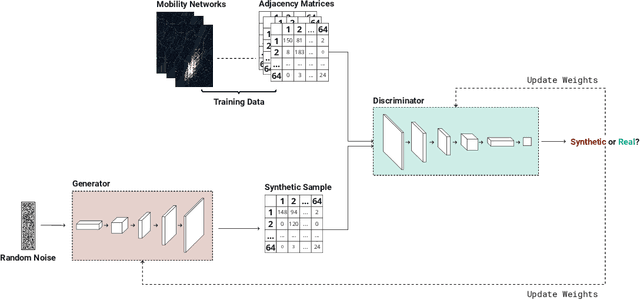Generating Synthetic Mobility Networks with Generative Adversarial Networks
Paper and Code
Feb 22, 2022



The increasingly crucial role of human displacements in complex societal phenomena, such as traffic congestion, segregation, and the diffusion of epidemics, is attracting the interest of scientists from several disciplines. In this article, we address mobility network generation, i.e., generating a city's entire mobility network, a weighted directed graph in which nodes are geographic locations and weighted edges represent people's movements between those locations, thus describing the entire mobility set flows within a city. Our solution is MoGAN, a model based on Generative Adversarial Networks (GANs) to generate realistic mobility networks. We conduct extensive experiments on public datasets of bike and taxi rides to show that MoGAN outperforms the classical Gravity and Radiation models regarding the realism of the generated networks. Our model can be used for data augmentation and performing simulations and what-if analysis.
 Add to Chrome
Add to Chrome Add to Firefox
Add to Firefox Add to Edge
Add to Edge